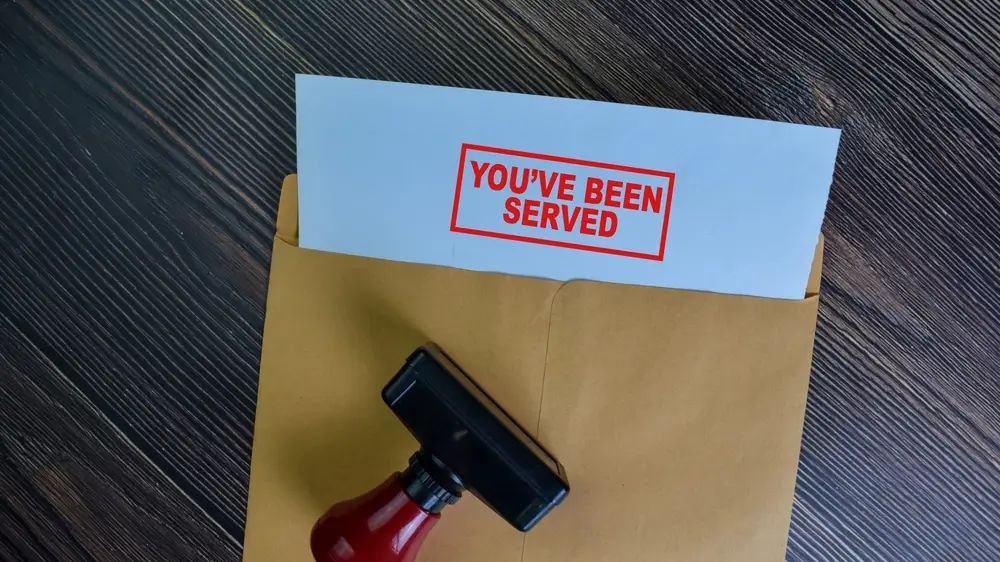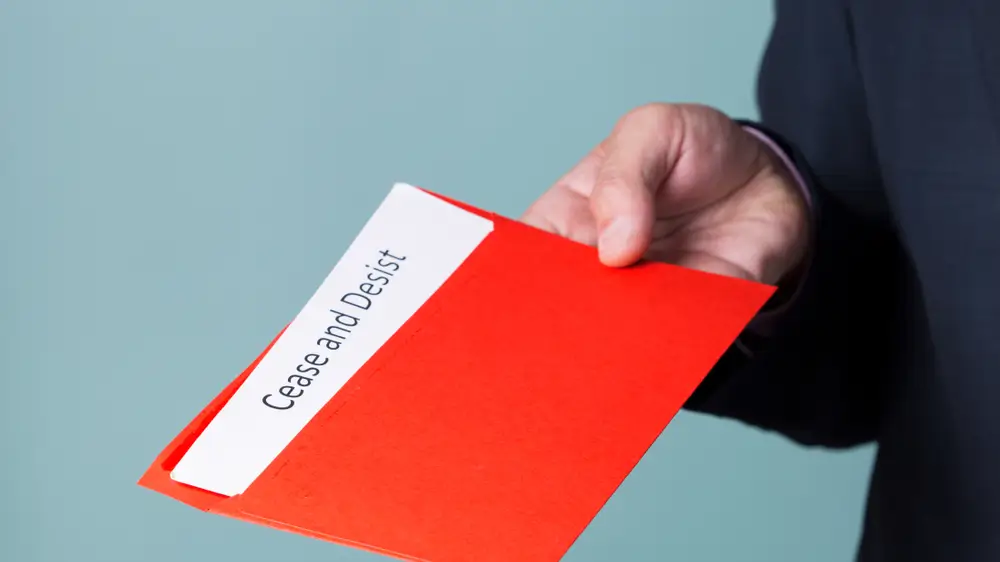
This site is reader-supported. We may earn a small commission if you make a purchase from one of our partners.
Picture this. You are in the middle of a civil dispute related to personal harassment, intellectual property infringement, or debt collectors. You know you need fast relief and want to avoid legal action. In this case, a Cease and Desist letter may be all you need.
However, this brings up a key question: how to serve a cease and desist letter?
This article will cover the differences between “serving” and “sending” a Cease and Desist letter, when you might consider each option, and what you need to include in your letter.
But first, a quick review in case this is your first time sending a demand letter.
What is a Cease and Desist letter?

A cease and desist letter is a tool for solving various disputes. It is a formal request to stop a specific activity. The letter sets out the specific violation and demands that the recipient immediately stop the offending behavior to avoid legal repercussions.
Cease and desist letters are generally used in two situations:
- To prevent someone from starting a specific activity.
- To get someone to stop an activity that they’ve already started.
Once you’ve determined that you need a Cease and Desist letter, you need to know how to get it to the offending party.
Types of Cease and Desist Letters
There are several different types of Cease and Desist letters that cover all different kinds of disputes. These include
- Interpersonal conflicts (such as harassment and defamation)
- Intellectual Property disputes (such as trademark infringement, copyright infringement, or patent infringement)
- Debt collection disputes (such as debt collectors breaching the Fair Debt Collections Practices Act)
- And many more, including property, contract, and landlord disputes
What does it mean to “serve” a Cease and Desist letter?

You’ve probably heard the term “service of process” before. Formal legal documents are typically “served” on the person or entity who needs to receive them. This ensures that the person receiving the documents is aware of the severity of the situation.
There are different rules for serving legal documents, depending on the document type and who needs to receive it.
However, because a Cease and Desist letter isn’t a formal document, you have more flexibility in delivering it.
Serving vs. Sending a Cease and Desist Letter

The terms “serving” and “sending” are often used interchangeably regarding Cease and Desist letters. However, there is a subtle but important distinction between the two.
When you serve a Cease and Desist letter, you are physically delivering it to the person who needs to receive it. You or your lawyer can do this, or you can hire a professional process server.
When you send a Cease and Desist letter, you’re simply mailing it to the person’s last known address or sending it via email. This is the most common delivery method for people when sending a demand letter.
How To Decide Whether to “Send” or “Serve” your Cease and Desist letter

There are a few critical factors to consider when deciding whether or not you need to “serve” or “send” your Cease and Desist letter:
When to “serve” a Cease and Desist Letter
It’s best to “serve” a Cease and Desist letter if:
- You need them to receive the letter very quickly
- You need to ensure they see it personally
- There’s a risk that the person won’t receive the letter (i.e., it may be intercepted or fail to be delivered)
- You do not know their current mailing address, but you do know their location
- The person needs to be formally notified of the seriousness of the situation
However, some situations don’t require a Cease and Desist letter to be delivered in person.
When to “send” a Cease and Desist Letter
It’s best to “send” a Cease and Desist Letter in the following situations:
- You’re not in a hurry for them to receive the letter (i.e., it’s ok for them to receive the letter in a few business days)
- You’re confident that the person will receive the letter (i.e., you have their current mailing address)
- The person doesn’t need to be formally notified of the seriousness of the situation.
- You feel email would be appropriate for the situation.
Once you’ve determined that you need to serve your letter personally, you can move on to how to serve the letter.
How To Serve Your Cease and Desist Letter

There are three options available when you need to serve a Cease and Desist letter; the best option for you will depend on your unique situation.
Option 1: Hire A Process Server
If you’re not comfortable delivering the Cease and Desist letter yourself, or if you need to have it delivered quickly, then hiring a professional process server is your best option.
A process server is a person who specializes in delivering legal documents. They know how to serve documents properly and will ensure that the intended party receives your Cease and Desist letter.
Depending on your location, hiring a process server typically costs between $100-$500.
Option 2: Hand-Deliver The Letter Yourself
If you’re comfortable delivering the letter yourself and don’t need it delivered immediately, hand-delivering the letter is a perfectly acceptable option.
To hand-deliver the letter, simply take it to the person’s last known address and ring the doorbell. You can leave the letter with a roommate or family member if they’re not home, but you risk the recipient not receiving it.
Option 3: Have Someone Else Deliver The Letter
If you know someone who lives near the person you need to serve, you can ask them to deliver the Cease and Desist letter for you. If you need to make it extra formal, you can hire a lawyer to hand-deliver it on your behalf.
This is a good option if you don’t want to deal with delivery yourself but don’t want to hire a professional process server.
What to Include In Your Cease and Desist Letter

Now that you know how to serve your Cease and Desist letter, it’s time to start writing the letter itself.
The content of your Cease and Desist letter will always depend on the situation, but there are a few key elements that you need to include.
Your name, address, and contact information:
Include your full name, mailing address, and contact information (phone number and email address) at the top of the letter. This will allow the person you’re serving the letter to contact you if they have any questions.
The date:
Include the date at the top of the letter so there’s no confusion about when it was sent/served.
The recipient’s name and address:
Be sure to include the full name and address of the person you’re serving the letter to. You can use their last known address if you’re unsure of their current address.
Your demand and the reason for it:
The body of your letter should start with a clear and concise description of what you want the recipient to do. For example, “I demand that you stop contacting me immediately.”
After stating your demand, you should briefly explain why you’re making the demand. For example, “I am demanding that you stop contacting me because your constant calls and texts are causing me stress and impacting my work.”
The consequences:
In this section, you outline the consequences if the offending party does not comply with your demand. This is where you state that you will pursue legal action or a civil claim. If you have hired a law firm to draft your letter, this can add extra weight to your claim.
A signature:
Be sure that either you (or your lawyer) signs the letter before you serve it. This will make it clear that the letter is coming from you, not someone else.
Final Thoughts
Serving a Cease and Desist letter can be a stressful experience, but it doesn’t have to be. By following the steps outlined in this article, you can be sure that your letter will be properly served and your rights will be protected.
Need help with your letter? Check out Law Depot. They offer a quick and effective Cease and Desist letter template that can help you solve your problem.

Wes Talisman is a freelance journalist who helps answer common legal questions for everyday people. He’s never won a Pulitzer Prize, but he does write a stellar Cease and Desist letter.